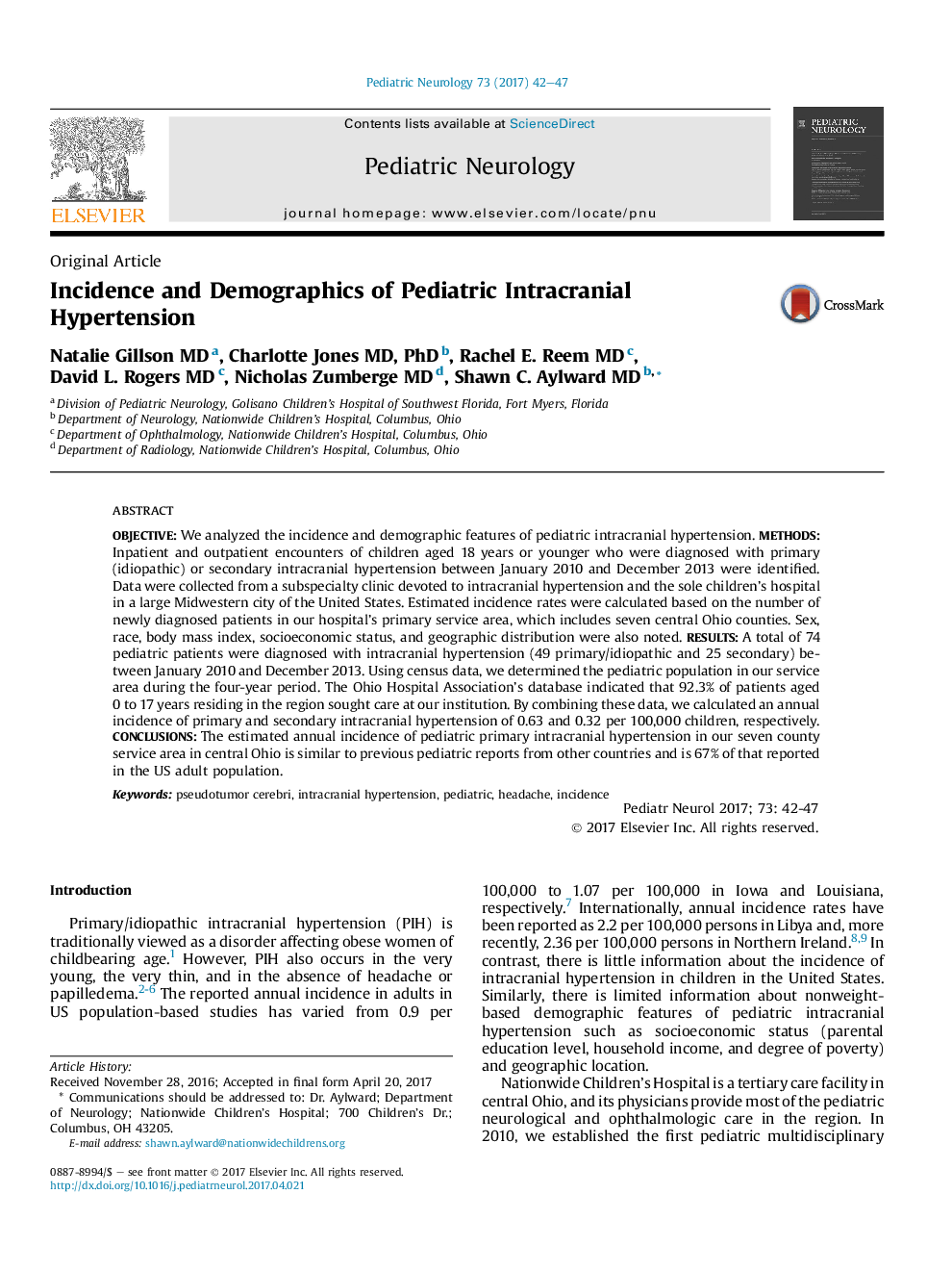| Article ID | Journal | Published Year | Pages | File Type |
|---|---|---|---|---|
| 5632910 | Pediatric Neurology | 2017 | 6 Pages |
ObjectiveWe analyzed the incidence and demographic features of pediatric intracranial hypertension.MethodsInpatient and outpatient encounters of children aged 18Â years or younger who were diagnosed with primary (idiopathic) or secondary intracranial hypertension between January 2010 and December 2013 were identified. Data were collected from a subspecialty clinic devoted to intracranial hypertension and the sole children's hospital in a large Midwestern city of the United States. Estimated incidence rates were calculated based on the number of newly diagnosed patients in our hospital's primary service area, which includes seven central Ohio counties. Sex, race, body mass index, socioeconomic status, and geographic distribution were also noted.ResultsA total of 74 pediatric patients were diagnosed with intracranial hypertension (49 primary/idiopathic and 25 secondary) between January 2010 and December 2013. Using census data, we determined the pediatric population in our service area during the four-year period. The Ohio Hospital Association's database indicated that 92.3% of patients aged 0 to 17Â years residing in the region sought care at our institution. By combining these data, we calculated an annual incidence of primary and secondary intracranial hypertension of 0.63 and 0.32 per 100,000 children, respectively.ConclusionsThe estimated annual incidence of pediatric primary intracranial hypertension in our seven county service area in central Ohio is similar to previous pediatric reports from other countries and is 67% of that reported in the US adult population.
